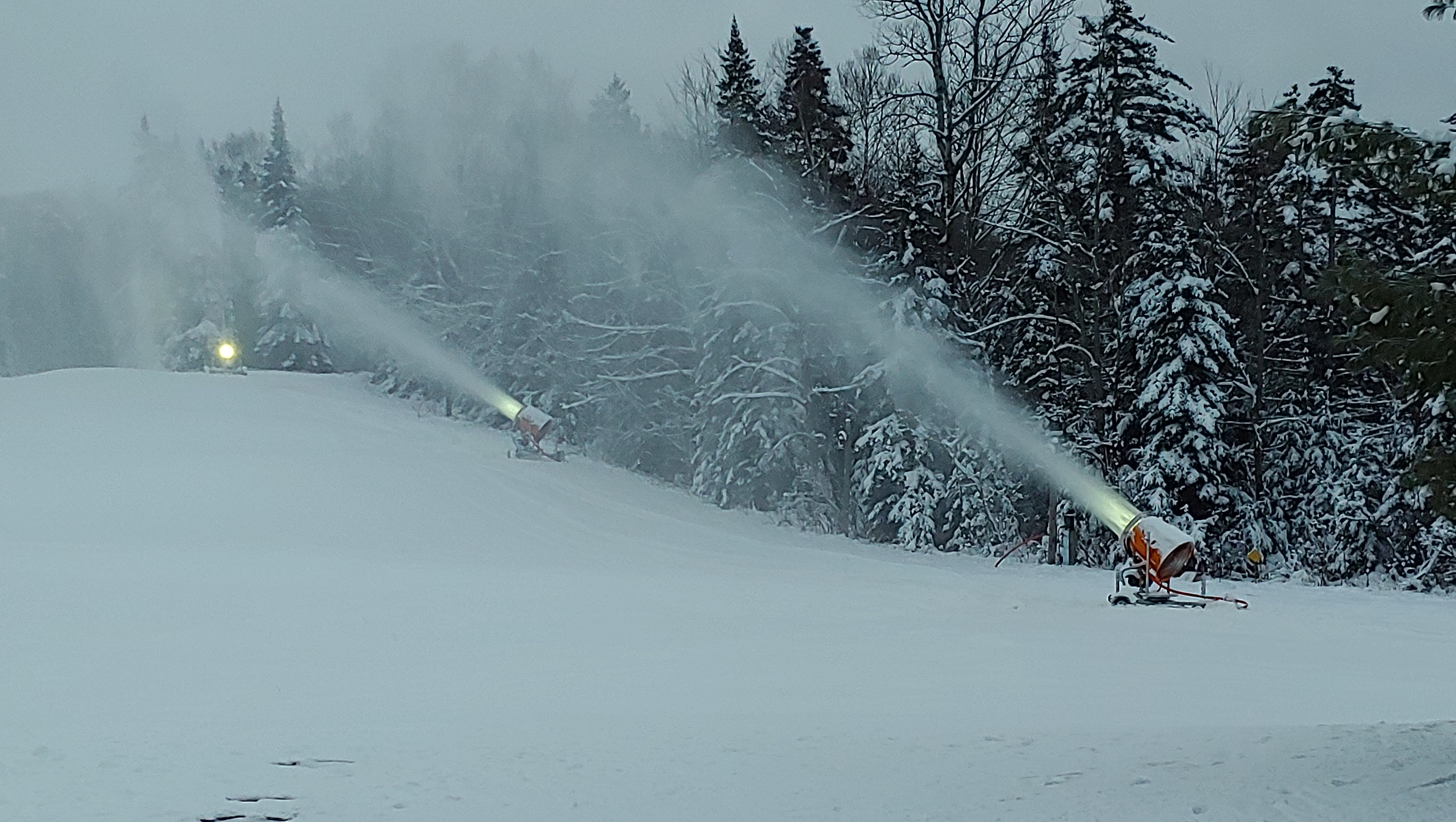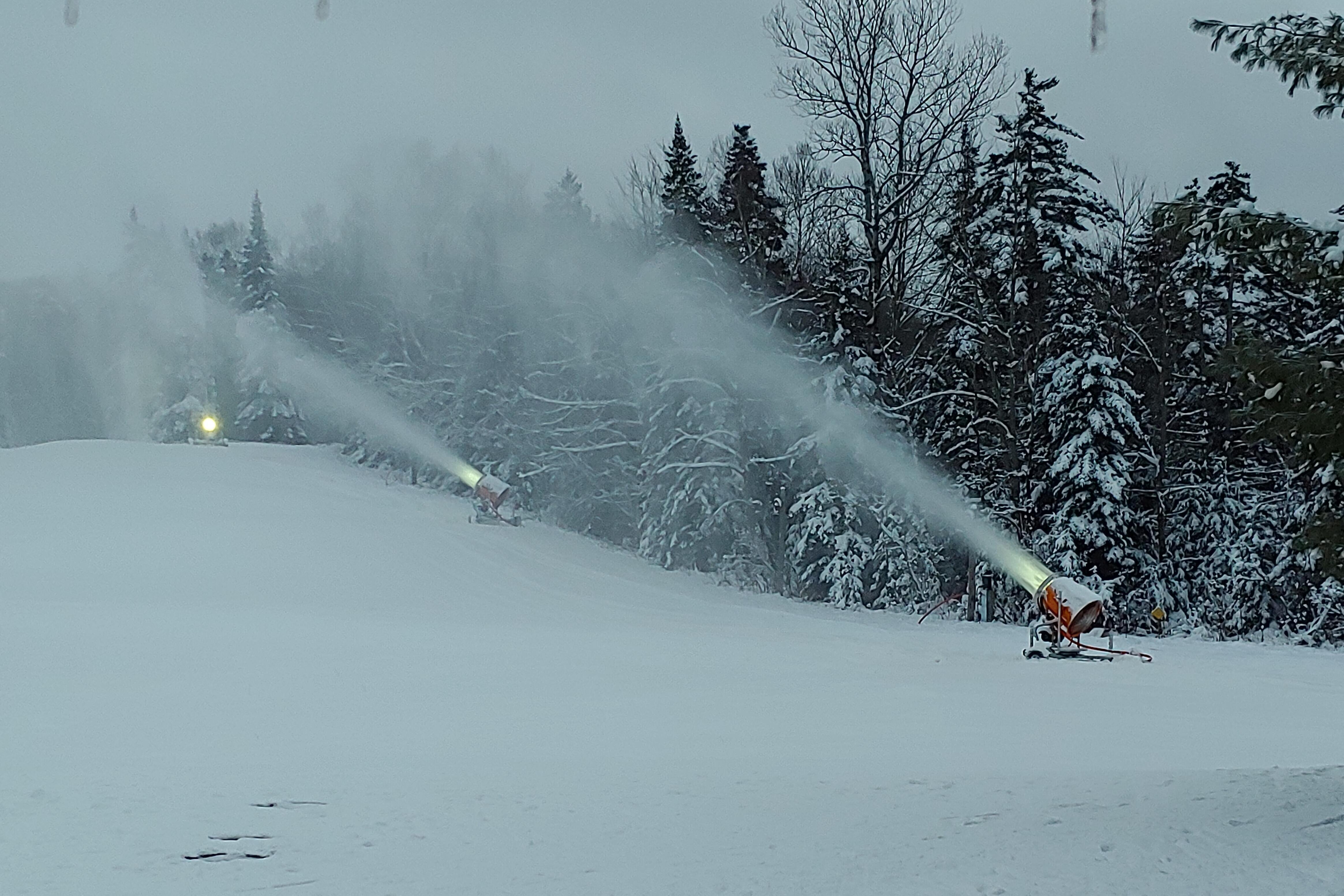
Cross country skiing in Vermont is one of the most romantic winter activities for recreation lovers. Concerns about global warming are now being allayed at seven cross country (XC) ski areas in Vermont that are no longer waiting for natural snowfall to begin their ski season because they’ve invested in snowmaking, just like their alpine ski area cousins. That makes Vermont the best choice for cross country skiers, who are hoping to find snow!
More and more XC ski areas are investing in snowmaking. Trapp Family Lodge steeped in tradition in Stowe, VT is included in this ever increasing list of XC ski resort snowmakers. The XC ski area operators in Vermont that produce machine-made snow across the state include Craftsbury Outdoor Center, Mountain Top Inn, Prospect Mountain, Rikert Outdoor Center, Sleepy Hollow Inn, Trapp Family Lodge, and Woodstock Nordic Center.
These XC ski areas invested in snowmaking because there are now less expensive snowmaking systems that fit their specific needs, but also because other business-driven issues are relevant such as attracting winter guests and fulfilling season pass holders' desire to extend the ski season beyond Mother Nature's whim.
Twenty years ago, one industry consultant dubbed the XC ski resort quandary as "precipitation roulette" as waiting for natural snowfall can be frustrating. The reasons to install snowmaking include operational security to guarantee skiing programs and staffing; competitive advantage against other XC ski resorts that do not have machine-made snow; and guaranteeing snow cover in important holiday periods, which can represent a substantial portion of annual winter business.
The necessary elements of a snowmaking operation include cold temperatures, water, power, and system components such as piping, pumps, compressors, and snow guns. The power requires both manpower and energy supplied by electricity or fuel. Making the snow efficiently cover a narrow corridor trail can be a challenge. Many operations simply cover a field with snow and then also move some of it to the trails.
Sleepy Hollow’s system in Huntington, VT is powered by solar energy. Rikert Nordic Center increased from an average of 70 days of operation before snowmaking was added to 140 days without in-season closures! Snowmakers used machine-made snow to cover trails to run early season programs for racing teams from across North America. The southern most XC ski area in Vermont at Prospect Mountain Trails Center in Woodford dedicated two employees to the snowmaking operation to cover two kilometers of trails (1.2 miles) which allows them to host kids from nearby school districts on Wednesday afternoons during the winter. Prospect also is the training site for the Williams College ski team and a local high school racing team. Now in the second year of snowmaking, Prospect Mountain’s Board president David Newell stated, “We move the snow guns around and are getting more used to doing it.”
But the most significant issue to embark on snowmaking has always been the investment required for these mostly small and seasonal XC ski businesses. The operators at Mountain Top Inn in Chittenden decided that snowmaking was a higher priority than selling retail products at the XC ski center. Snowmaking supports so many aspects of the ski area activities from rental operations and ski lessons to tubing and snowshoeing. In terms of the guest perspective, winter guests expect to book travel to a destination and get the experience that was desired…and that includes snow! Who knows, perhaps there will be a day sometime soon when snowmaking will be a basic aspect of all XC ski area operations.
